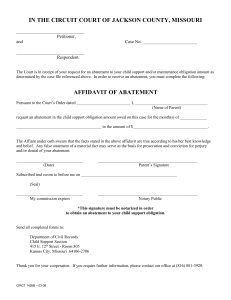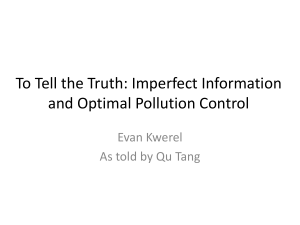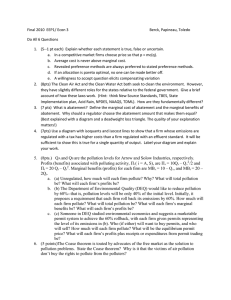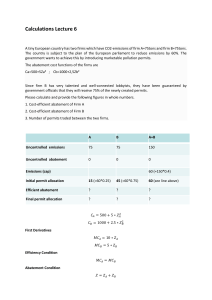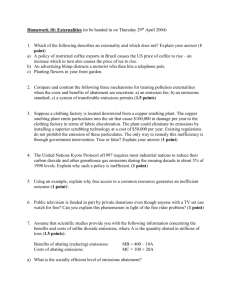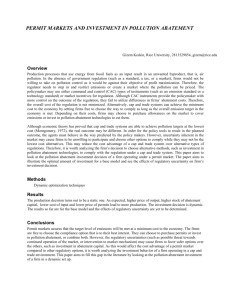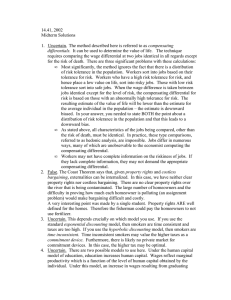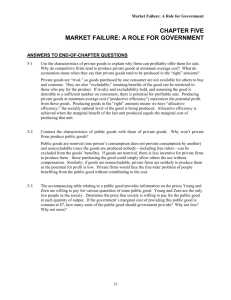Chapter 8 Questions and Answers
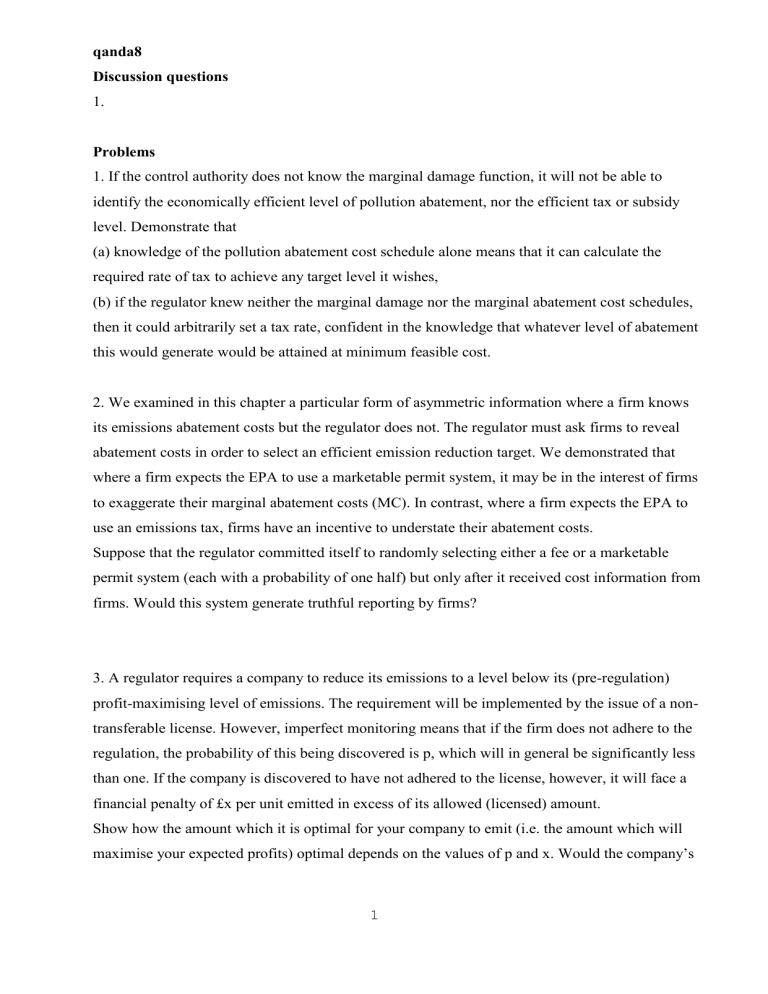
qanda8
Discussion questions
1.
Problems
1. If the control authority does not know the marginal damage function, it will not be able to identify the economically efficient level of pollution abatement, nor the efficient tax or subsidy level. Demonstrate that
(a) knowledge of the pollution abatement cost schedule alone means that it can calculate the required rate of tax to achieve any target level it wishes,
(b) if the regulator knew neither the marginal damage nor the marginal abatement cost schedules, then it could arbitrarily set a tax rate, confident in the knowledge that whatever level of abatement this would generate would be attained at minimum feasible cost.
2. We examined in this chapter a particular form of asymmetric information where a firm knows its emissions abatement costs but the regulator does not. The regulator must ask firms to reveal abatement costs in order to select an efficient emission reduction target. We demonstrated that where a firm expects the EPA to use a marketable permit system, it may be in the interest of firms to exaggerate their marginal abatement costs (MC). In contrast, where a firm expects the EPA to use an emissions tax, firms have an incentive to understate their abatement costs.
Suppose that the regulator committed itself to randomly selecting either a fee or a marketable permit system (each with a probability of one half) but only after it received cost information from firms. Would this system generate truthful reporting by firms?
3. A regulator requires a company to reduce its emissions to a level below its (pre-regulation) profit-maximising level of emissions. The requirement will be implemented by the issue of a nontransferable license. However, imperfect monitoring means that if the firm does not adhere to the regulation, the probability of this being discovered is p, which will in general be significantly less than one. If the company is discovered to have not adhered to the license, however, it will face a financial penalty of £x per unit emitted in excess of its allowed (licensed) amount.
Show how the amount which it is optimal for your company to emit (i.e. the amount which will maximise your expected profits) optimal depends on the values of p and x. Would the company’s
1
decision be different if the penalty were a fixed fine, irrespective of the magnitude of its transgression?
4. You are given the following information:
(a) A programme of air pollution control would reduce deaths from cancer from 1 in 8,000 to 1 in
10,000 of the population.
(b) The cost of the programme is expected to lie in the interval £2 billion (£2,000 million) to £3 billion annually.
(c) The size of the relevant population is 50 million persons.
(d) The ‘statistical value’ of a human life is agreed to lie in the interval £300,000 to £5 million.
If the only benefit from the programme is the reduced risk of death from cancer, can the adoption of the programme be justified using an economic efficiency criterion?
2
